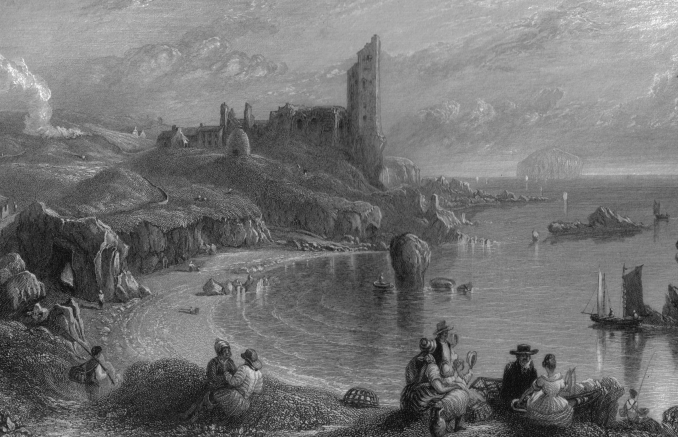Dunure Castle

The ruins of this thirteenth century castle built by the Clan Kennedy is located on a promontory on the Carrick coast. The remains seen today are from the fifteenth and sixteenth century. The site is in South Ayrshire (Scottish Gaelic: Siorrachd Inbhir Àir a Deas), about 5 miles (8.0 km) south of the town of Ayr (Inbhir Àir). The ruined castle overlooks the small coastal village of Dunure (Dùn Iùbhair). The Kennedy's of Carrick who owned the castle were once one of the most powerful families in Ayrshire and ruled over much of south western Scotland.
The remains of the castle are mainly in two parts. At the seaward end of the promontory on which it is built, there is an upper ward. It once had a tall tower along with other buildings. On the landward side of the promontory there are number of two storey or perhaps higher structures. The remains of the ruined buildings in the lower ward, are a bit more intact than the upper ward and a number of stone vaults can still be seen. There is a circular beehive type dovecot to the east of the castle. Beneath the castle is a cavern, called the Browney's Cave which may have been a secret tunnel leading to the castle. For three days from 4 August 1563, Mary, Queen of Scots, stayed at Dunure Castle on her Royal tour along the west coast to Glenluce Abbey then on to Whithorn Priory. The castle began to fall into ruin in the mid-17th century and by 1694 it was described as "wholly ruined".
Image: Dunure Castle, Ayrshire, 1840. Source Wilson Land of Burns 1840.
Link: VisitScotland Dunure.
Celtic nation:
- Scotland
Itinerary:
- Scotland Aryshire
Place type:
- Castle





